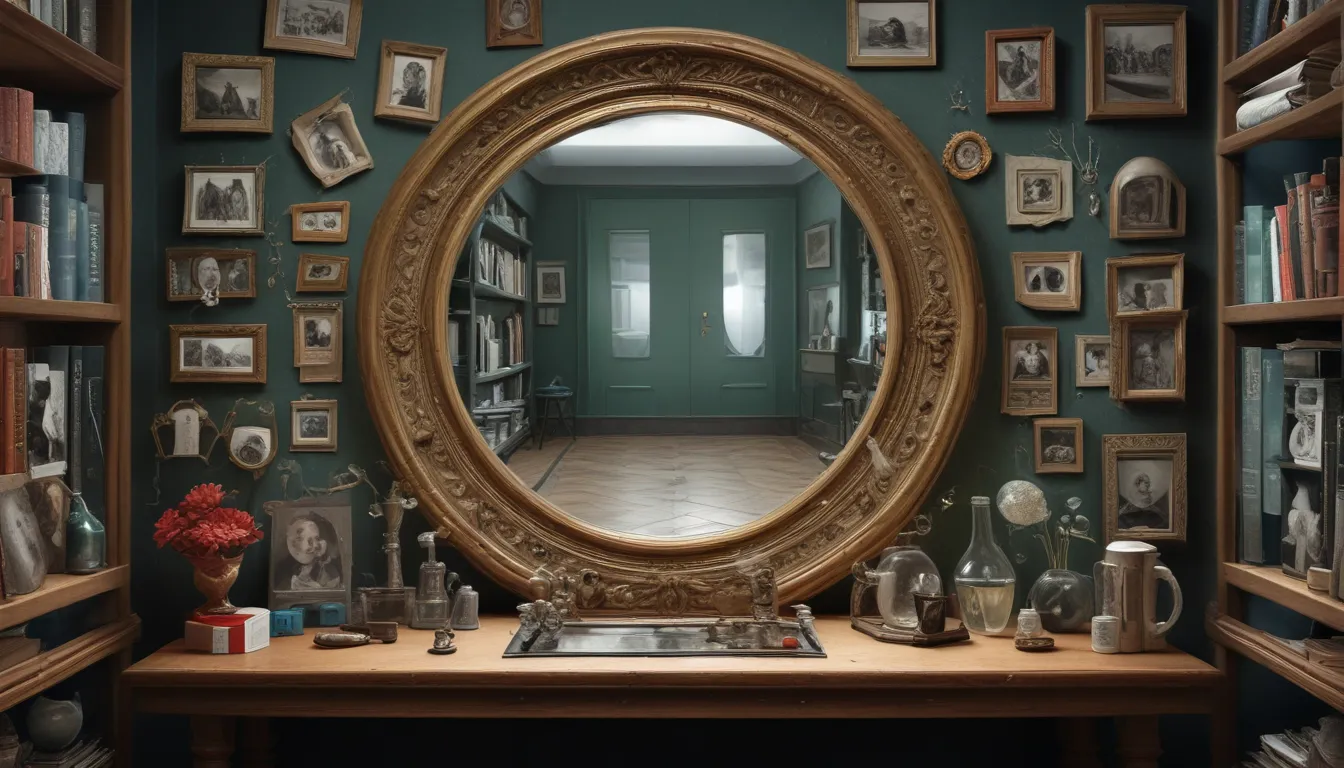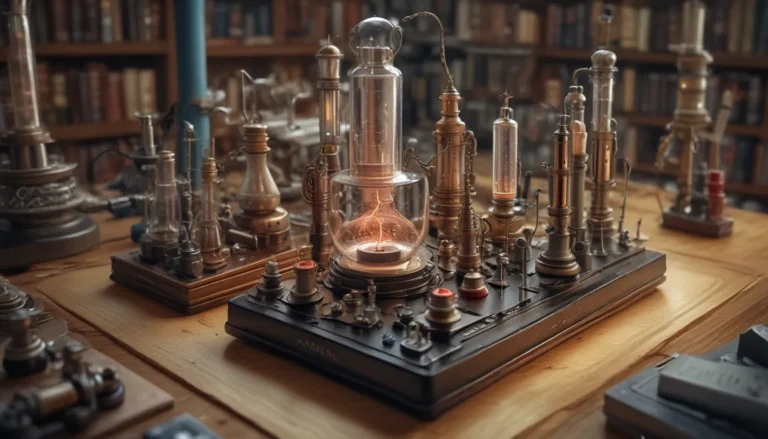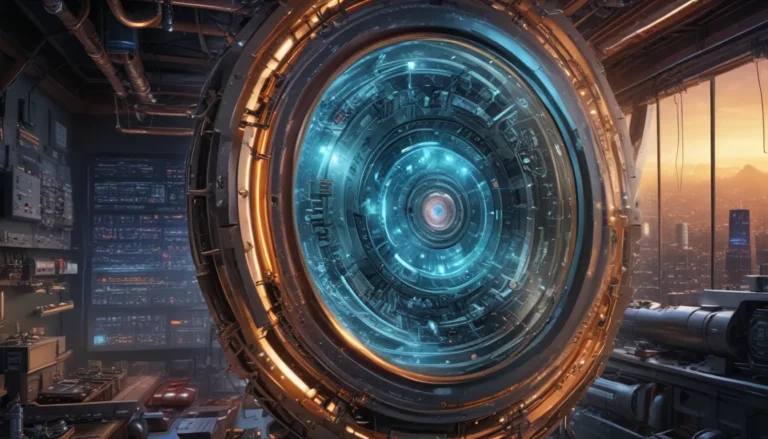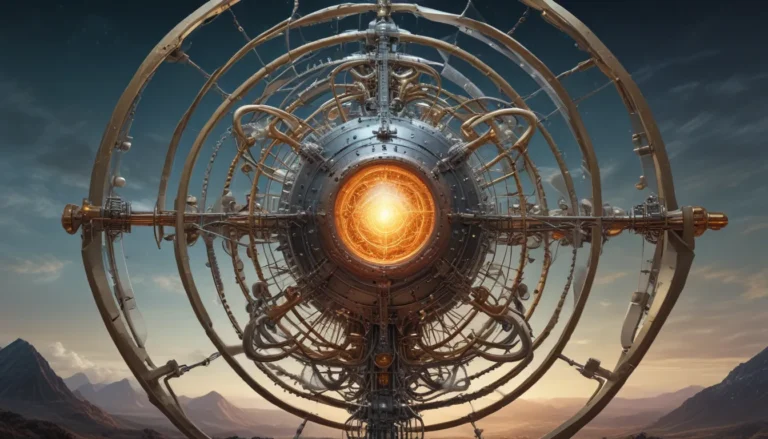A Note About Images: The images used in our articles are for illustration purposes only and may not exactly match the content. They are meant to engage readers, but the text should be relied upon for accurate information.
Mirrors are more than just tools for vanity and reflection; they are portals to a hidden world of science and physics. From their ancient origins to their impact on modern society, mirrors have a rich history and intriguing capabilities that may surprise you. Let’s unravel the mysteries of mirrors as we explore 10 mind-blowing facts that will change the way you perceive these reflective wonders.
The Evolution of Mirrors: From Ancient Civilizations to Modern Innovations
Mirrors have a history that dates back thousands of years, with ancient civilizations using polished metal surfaces for reflection. It wasn’t until the 1st century AD that glass mirrors, as we know them today, were invented by the Romans. Coating glass with reflective materials like silver or tin paved the way for the first true mirrors we use today.
The Science Behind Mirrors: Understanding the Law of Reflection
Ever wondered how mirrors reflect light so accurately? Mirrors operate based on the law of reflection, where the angle at which light hits a mirror equals the angle at which it bounces off. This fundamental principle allows mirrors to create clear reflections of objects in front of them, making them essential for personal grooming, decoration, and scientific applications.
Discovering Two-Way Mirrors: A Closer Look at One-Way Reflection
Two-way mirrors, or one-way mirrors, are specially coated to reflect most light while allowing some to pass through. This unique property creates a one-way reflection, where observers on one side can see through while those on the opposite side remain unaware. Commonly used in interrogation rooms and television studios, two-way mirrors captivate with their mysterious capabilities.
Optical Illusions and Space Enhancement: The Magic of Mirrors in Design
Strategically placing mirrors in a room can create an illusion of extra space by reflecting light and extending the visual boundaries. By positioning mirrors opposite windows or in narrow hallways, designers can make rooms appear larger and brighter. This optical trickery is a popular technique used in interior design to enhance the perception of space.
The Spectacular Salar de Uyuni: The World’s Longest Mirror
Did you know that the world’s longest mirror is not a man-made object? Stretching over 20 miles, the Salar de Uyuni in Bolivia is the largest salt flat globally, creating a breathtaking mirror effect when covered with a thin layer of water. The reflection of the sky on the flat surface seems to extend indefinitely, showcasing the natural beauty of this captivating phenomenon.
Superstitions and Folklore: Mirrors Through the Lens of Belief
Mirrors have long been entwined with superstitions and myths, with beliefs ranging from bad luck associated with breaking a mirror to covering mirrors during funerals to prevent souls from getting trapped. Folklore often depicts mirrors as portals to other realms or tools for divination, adding a mystical element to their reflective nature.
Breaking Barriers: The First Rear-View Mirror Invention by Florence Lawrence
In 1914, Florence Lawrence revolutionized road safety by inventing the first mechanical rear-view mirror for automobiles. Prior to her innovation, drivers relied on hand signals or risky maneuvers to see behind them. Lawrence’s invention laid the groundwork for modern rear-view mirrors, showcasing the impact of women in technology and safety advancements.
Infinity Mirrors and Anamorphic Images: Unveiling Mirror Artistry
Step between two mirrors at specific angles, and witness the mesmerizing infinity mirror effect, where reflections extend into the distance endlessly. Artists have also utilized mirrors to create anamorphic images, distortions that reveal hidden secrets when viewed in specially shaped mirrors. These artistic expressions showcase the versatility and creativity mirrors offer in the world of art.
Mirrors in Scientific Instruments: The Vital Role in Advancements
Mirrors are indispensable components in various scientific and optical instruments, such as telescopes and microscopes. By reflecting and focusing light, mirrors enable scientists to observe objects from afar or at a microscopic level. Without mirrors, groundbreaking discoveries in physics and astronomy would not have been possible, underscoring their critical importance in scientific progress.
Appreciating the Miraculous World of Mirrors
Mirrors continue to captivate us with their versatile applications, optical illusions, and historical significance. Whether used for practical purposes or artistic endeavors, mirrors play a pivotal role in human existence and scientific exploration. From the captivating world of infinity reflections to the practical applications in optical instruments, mirrors never cease to amaze us with their unique properties.
Embrace the Wonder of Mirrors in Your Daily Life
From their origins in ancient civilizations to their modern-day applications, mirrors hold a wealth of knowledge and fascination waiting to be explored. Whether pondering the science behind reflections or marveling at optical illusions created by mirrors, take a moment to appreciate the wonders of these reflective marvels in your daily life.
FAQs About Mirrors
- How do mirrors reflect light?
-
When light hits a mirror, it bounces off following the law of reflection, creating a mirrored image.
-
Why do mirrors reverse images horizontally?
-
Mirrors reverse images horizontally due to the phenomenon of lateral inversion, where the object’s orientation flips from left to right during reflection.
-
Can mirrors create optical illusions?
-
Yes, mirrors can produce various optical illusions, including funhouse mirror effects that distort reflections for visual intrigue.
-
Are all mirrors the same?
-
No, mirrors vary in quality, with high-quality ones using silver or aluminum coatings for clear reflections. Lower-quality mirrors may have uneven coatings or other materials.
-
Can mirrors break the laws of physics?
-
Mirrors cannot defy the laws of physics, despite creating captivating illusions. They adhere to fundamental principles like energy conservation and the law of reflection.
-
Do mirrors absorb or transmit light?
-
Mirrors neither absorb nor transmit light but reflect almost all light falling on them, making them ideal for creating reflections and images.
-
Can mirrors generate infinite reflections?
-
Facing two mirrors towards each other can create the mesmerizing “infinite mirror” effect with reflections bouncing endlessly between them.
-
Can mirrors lose their reflective properties over time?
-
Yes, mirrors can degrade over time due to factors like oxidation or damage to the reflective coating, necessitating proper care for maintenance.
-
Are mirrors useful in scientific applications?
-
Mirrors are crucial in scientific instruments like telescopes and microscopes, redirecting and focusing light to enable scientific observation and experimentation.
-
How can mirrors create the illusion of depth?
- By placing mirrors strategically to reflect objects from multiple perspectives, spatial illusions of depth and dimension can be achieved, enhancing the overall visual experience.
As you delve into the captivating world of mirrors, remember to embrace the vast possibilities and wonders they offer in both practical and artistic realms. Explore the myriad reflections, optical illusions, and historical significance woven into the fabric of mirrors, and let their enigmatic nature inspire and captivate you. Mirrors truly reflect not just our images but a world of endless fascination and discovery.






